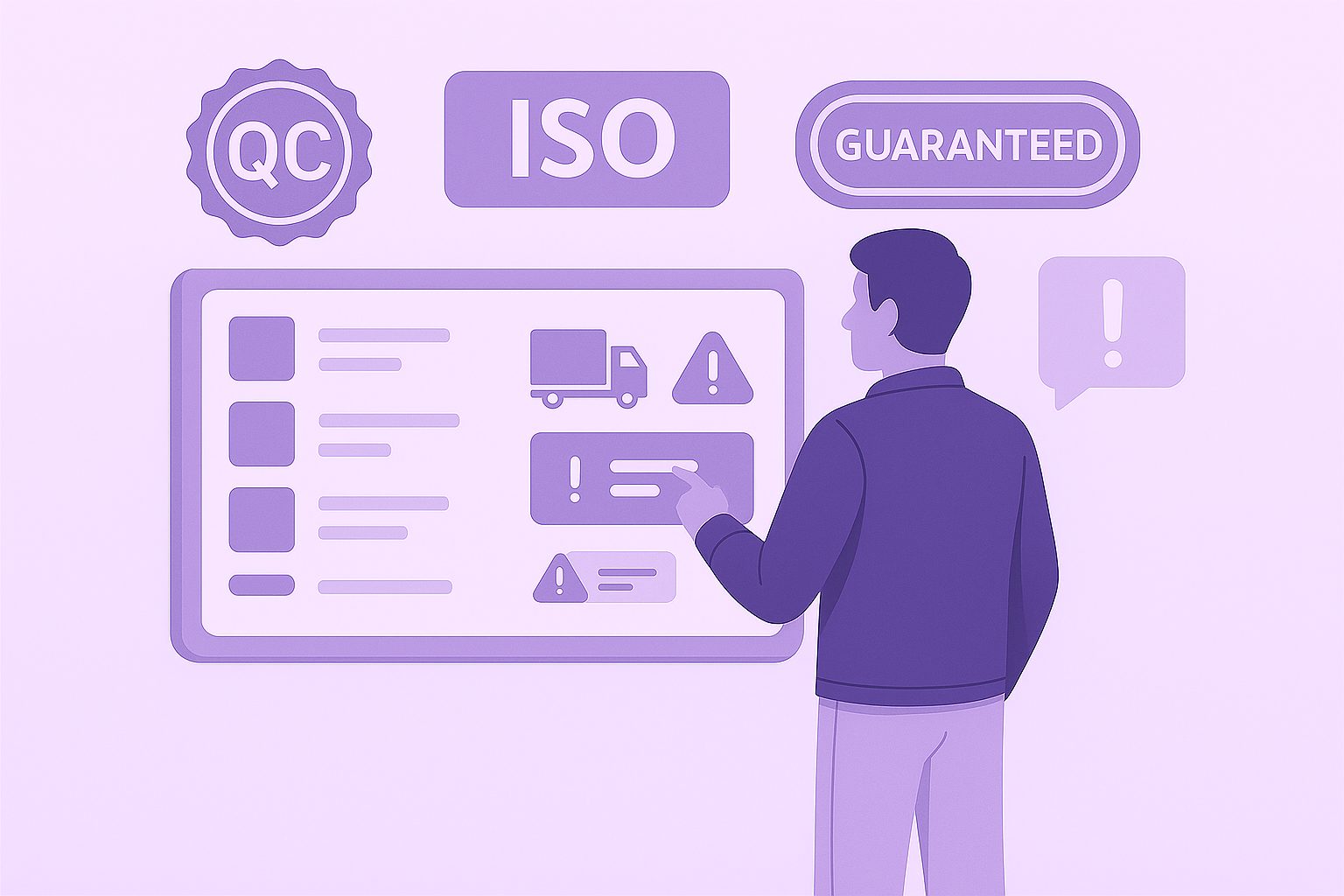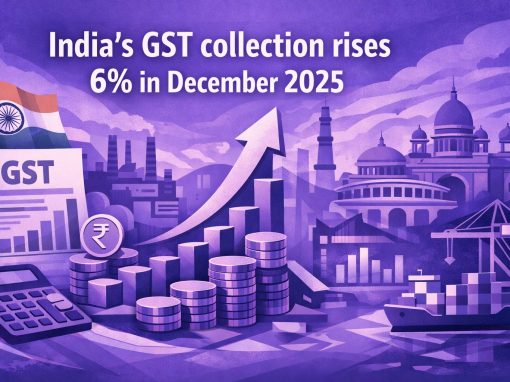Table of Contents
- What is an Order ID?
- Why is Order Number Important?
- What is Tracking ID Number?
- What Do Order number and Tracking Number Look Like?
- How to Find the Order ID Number?
- What is Order ID Tracking?
- How to Track Order Status?
- How to Use Order number or Tracking Number?
- What is a Shipment Tracking Number?
- Use Cases
- Smart Tips to Manage Orders and Track Shipments Better
- Common Mistakes and How to Avoid Them
- Advanced Tracking Techniques
‘Your order is confirmed with Order ID: FX-250123-110-12345. You can track the status of your order shipment with Tracking ID: LP-12345-628-110.’
If you use logistics, transport, or courier services for business or personally, then the terms Order ID and Tracking ID (also known as Order number and Tracking number) must be familiar to you. These are common terms that logistics shipping companies use for shipping and order fulfilment.
Today, with the rise of domestic and international shipping and e-commerce business, logistics companies prioritise efficiency in transportation and delivery. Tracking order status is a key feature that customers demand, making it necessary for businesses to build capabilities that facilitate order ID tracking. So, let’s understand what Order ID and Tracking ID are, how they are different, where and how these IDs are used, and how to track the order ID status.
What is an Order ID?
An Order ID is a unique number that gets assigned to an order placed by the customer (online or offline). In several cases, it is also known as a Reference number or even Purchase ID.
An Order ID is provided when a buyer/customer places an order. Businesses have different Order ID formats that are unique to their business and facilitate the entire order fulfilment process. The Order ID number format usually consists of letters, numbers, and characters in a structure unique to the business.
Order Number Example:
MET111ddddxxxxDEL – where ‘MET’ refers to the seller company code, ‘111’ is a specific code used by the company, ‘dddd’ refers to the order placement date, ‘xxxx’ is the actual Order number for the customer, ‘DEL’ is the final destination code.
(This is a sample and not specific to any business.)
Are Order ID and Order Number the same?
The order number is the same as the Order ID. Businesses usually use either of these terms to denote the unique identifier when a customer places an order.
An order number can be used to:
- Fetch details about a particular order
- Get updates on its delivery ETA and status
- Connect with the customer service team or transport companies for any queries
In general, the Order number can be of 4 to 20 characters, with a mix of alphabets, numbers, and special characters. It’s unique to every business.
In cases where a business is doing its own shipment, the Order number can also double as the Tracking number. However, most businesses outsource logistics services and provide separate identifiers for Order ID and Tracking ID to simplify the process.
Why is the Order Number Important?
Understanding the Order ID or Order number is crucial for both the buyer and seller, and any 3PL logistics service provider involved in the actual transportation of goods.
It acts as proof of transaction and facilitates communication. When a customer requires specific details about their purchase, the Order ID number helps the business generate, track, and fetch all relevant information about the specific order. Details like date of order, items and quantity, price, payment status, etc., can easily be fetched.
Here are 5 key reasons why Order Number is important in logistics and E-commerce:
-
- Provides a Unique Reference: Order number is a unique reference for each order purchased in a purchase order, which allows customers and businesses to easily find an order or track it in the system.
- Necessary for Customer Support: When issues arise or customers want an update, an order number provides customer service teams the ability to bring the right information quickly. This can help facilitate faster service and greater accuracy.
- Allows for tracking and fulfilment: It links an order, tracking ID, invoice, and shipping information. This is critical for pulling delivery tracking and shipping schedules to ensure orders are fulfilled on time.
- Assists with auditing and record keeping: Order numbers are useful for maintaining updated business records, auditing, and preparing transactions, reports, and reconciliations.
- Aids with Returns, Replacements, and Refunds: In most cases, either returns or warranty claims must refer back to an order number in order to make the purchase valid. Accurate referencing of an order number will assist with the processing of the return, replacement, or refund for the original order.
Similarly, details on packaging, labelling, shipment partners, and delivery ETAs can also be fetched using the Order status tracking mechanism, though for tracking purposes, most businesses generate a separate Tracking ID.
What is Tracking ID Number?
A Tracking ID or number is a unique identifying number that is given to a shipment to track its progress. It is provided by the shipping company or carrier, or 3PL service provider, as the case might be, and enables stakeholders to track their shipment during transit.
Similar to an Order ID, the Tracking number also consists of a series of alphanumeric and special characters.
Tracking Number Example:
BALM123xxxxaaaaKOL – Where ‘BALM’ can stand for the code for the logistics services company, ‘123’ its unique identifier, ‘xxxx’ the customer Tracking ID, ‘aaaa’ codes related to date/type of shipment or any other, ‘KOL’ the final destination
(This is a sample and not specific to any business.)
Why is Tracking Number Important?
The Tracking ID number is important as it enables customers and businesses to track in real-time the status and location of a package from its place of origin to its destination. It further:
- Ensures transparency in that customers can view their order’s journey
- Reassures customers by providing ETA on delivery
- Helps to address any delivery-related issues and hence improves customer service
Tracking ID is critical in an e-commerce business where multiple delivery partners are used for last-mile delivery. Tracking number provides status details on the package, such as – shipped from warehouse, arrived at distribution centre, delivery partner assigned, out for delivery, delivered to customer.
To businesses and customers, both Order ID vs Tracking ID are unique and should be used accordingly.
What Do Order Number and Tracking Number Look Like?
Let us look at the sequence of alphanumeric digits and characters closely and understand the same.
Order ID format
Consider a fictitious India-based company, FX Garments, which receives an order and gives it the following identifier: Order ID: FX-250123-110-12345
A breakdown of this Order ID may read like:
- FX: Company code
- 250123: Date of placing the order
- 110: Delivery location code
- 12345: Order sequence number
Similarly, different companies can have different formats for Order numbers that can be understood by them and used for reference. As a customer, you only need to provide this Order number during all interactions with the company.
Tracking ID Format
In the same context, let us look at what the tracking number looks like. The Tracking number is usually provided by the logistics company, usually a 3PL partner offering services for warehouse logistics and last-mile delivery, or any other.
In our above example, consider FX Garments using LP Transporters (fictitious) as their third-party logistics provider.
Once the order is received, an agent in LP Transporters’ warehouse will check inventory and prepare the package (e.g., quantity, packaging, labeling, etc.). Before shipping, a Tracking number will be provided (Tracking ID: LP-12345-628-110) to enable all entities to track the status and location of the package.
A breakdown of the Tracking ID may read like:
- LP: Logistics partner company code
- 12345: The original order sequence number
- 628: The unique shipment sequence number
- 110: Delivery location code
As mentioned, the Tracking number and Order number are unique to businesses, and each follows its nomenclature. For customers, what matters is knowing the respective Order vs Tracking numbers as a reference for Order-related enquiries or Tracking status.
How to Find the Order ID Number?
Having access to your Order Number is necessary. But what if you don’t know what your Order Number is?
When you place an order, the seller sends a transaction email and/or SMS (or even WhatsApp message) confirming your order. You can track the Order number mentioned in this email/SMS communication.
Similarly, if you want to find the Order number online, you can find it on the seller’s company website. In most cases, the journey looks like this:
Log in to account > Visit ‘My Orders’ > Click to view the list of orders with the Order ID number
The process is the same if you want to find the Tracking number. When your order is ready for shipment, an email/SMS message will be sent, updating you with Tracking ID details to help you track the delivery timelines of your package.
Note: Many businesses today, especially those that have air consignments, use AWB numbers or air waybills that provide details about the goods being transported.
What is Order ID Tracking?
Order ID tracking refers to tracking the status and location of your order. It refers to how customers and businesses can check the status of a package using the Order ID. Though this is not the most common practice for checking the status/location of a package, many small businesses with a limited number of orders use the Order ID number as the single point of reference for fetching all details about a specific order, including its real-time status.
In most cases, customers can log in to their account (company website) and check the real-time order status. Most businesses provide critical information such as the date of order placed, order details, payment status, payment mode, any code applied, real-time shipment updates, and delivery ETA.
This is similar to a self-service function where customers can track order status without having to contact the customer support team for updates. This is often considered a critical feature that enhances customer experience and engagement with the business.
How to Track Order Status?
Once you have the Tracking number, it is easy to track the status of your order. All you have to do is visit the company website (3PL or freight forwarding company website) and enter your Tracking ID number in the search box to learn the status of your order.
It is important to note the following about tracking the order status:
- For security reasons, many websites require you to log in to your account to view order status
- For easy access, communications sent to your registered email ID and phone number come with the Tracking ID
- In some cases, emails/SMS are sent for important status updates (e.g., order out for delivery, delivery attempted, etc.)
Real-time order status tracking is the norm today, especially for e-commerce businesses. Depending on the service provider, order status tracking can be basic or detailed.
- Basic order status tracking: Order placed > Order Shipped > Out for delivery > Order delivered
- Detailed order status tracking: Order placed > Order processed > Ready to be shipped > Shipped from warehouse > Arrived in distribution centre > Delivery partner assigned > Out for delivery > Order delivered
How to Use Order number or Tracking Number
As a customer, use Order ID for checking purchase details and as a reference for support, and use Tracking ID to find the location and status of your delivery.
Check this table for a quick summary of the difference between Order ID and Tracking ID.
Order Number vs Tracking Number
| Order ID Number | Tracking ID Number |
| Provided by the seller upon confirmation of a purchase order | Provided by the seller or logistics partner when the order package is ready to be shipped |
| There can be only one Order ID for every order placed | There can be more than one Tracking ID for a single Order ID if the shipment is done in multiple packages or via different logistics partners |
| Can be used for tracking the status of a package, and adding to better customer experiences | It is used for tracking the status and location of a package only |
How to Use Order Number and Tracking ID Effectively
As an MSME managing multiple orders across marketplaces and logistics providers, understanding how to use order numbers and tracking IDs can facilitate the overall shipping process.
- In B2B versus B2C logistics: In B2C deliveries (eCommerce, etc.), tracking IDs are essential for customers to track their shipments and have transparency of the estimated delivery. In B2B versus B2C deliveries, there is sometimes a significant delay between the booking (purchase order), shipment, and invoicing. In these scenarios, the order number is useful to link together invoices, dispatch times, and your internal referencing, while the tracking ID will give you real-time shipping updates for your procurement and management teams.
- Used effectively across ERP and Order Management Platforms: Order numbers and tracking IDs can easily be auto-synced on ERP systems and logistics software to minimise data errors and communicate to sales, dispatch, and accounts.
- Consolidated view with B2B logistics platform: Platforms like Tata nexarc’s logistics dashboard allow MSMEs to have a consolidated view of multiple orders and tracking updates on all transporters, to help with deliveries, procrastination, and cost management.
What is a Shipment Tracking Number?
A shipment tracking number is useful when you have to track a shipment. In today’s world of e-Commerce shipping, a shipment tracking number is provided when an order is shipped and can provide the latest updates on the package’s location and delivery timelines.
Tracking vs. Shipment vs. Consignment Number
| Tracking ID | Shipment Tracking Number | Consignment Number |
| A unique identifier provided by the logistics provider to track a package during transit. | It can be the same as a tracking number, but it refers to tracking parcels in shipping. | Unique identifier for a batch of goods |
| Used for couriers, packages, or any other | Used mainly in shipping and e-commerce logistics | Used for multiple packages under one Order ID or Reference number for ease of tracking |
| Real-time tracking details on status and location | Tracking details on the shipment process | Tracking details of multiple packages across the journey grouped as one consignment |
Use Cases
E-commerce Industry: Enhancing Customer Experience and Transparency
In the e-commerce industry, Order IDs and Tracking IDs play a pivotal role in improving customer experience. Consider a global online retailer like Amazon. When a customer places an order for a product, they receive an Order ID (e.g., AMZ-135796-8506-457), which allows them to track all the details of their purchase, e.g. product type, quantity, price, and payment status. This Order ID serves as the primary point of reference for customer service interactions and helps businesses maintain accurate order records.
Once the order is ready for shipping, a Tracking ID (e.g., UPS-12345-6789) is assigned by the courier company. This ID is used by customers to track their shipments in real-time, offering transparency in the delivery process. Customers can see when their package leaves the warehouse, its transit points, and the estimated delivery time.
Use Case:
A customer orders a pair of shoes from an online retailer. Upon placing the order, they receive an Order ID for reference. As the shoes are processed and shipped, they receive a Tracking ID that allows them to follow their package’s journey from warehouse to doorstep, reducing anxiety and increasing satisfaction.
B2B (Business-to-Business) Sector: Efficient Bulk Orders and Shipment Tracking
In the B2B sector, where large-scale shipments are the norm, Order IDs and Tracking IDs serve a critical role in streamlining operations. For instance, a wholesaler that supplies raw materials to construction companies uses Order IDs to track large orders and their specifics, such as order quantity, special product requirements, and delivery schedules.
Once the order is ready for dispatch, the Tracking ID comes into play. This ID allows both the supplier and the construction company to track the shipment’s progress. When the materials arrive at the construction site, the Tracking ID confirms that the shipment is in good condition, and the construction team can proceed with their plans without any delays.
Use Case:
A construction company places a bulk order for cement and steel from a supplier. The supplier assigns an Order ID to the bulk order for internal tracking. As the shipment moves across multiple warehouses and transportation hubs, a Tracking ID is provided to ensure that the construction team can follow the progress of the delivery, ensuring that materials are available when needed for project timelines.
Smart Tips to Manage Orders and Track Shipments Better
Efficient management of order tracking plays an important role in successful logistics operations, especially for Micro, Small, and Medium Enterprises (MSMEs) handling multiple shipments daily. Here are some useful methods to keep an eye on your order tracking:
- Keep It streamlined with digital solutions: Use integrated logistics platforms like Tata nexarc that help you quickly identify and access order numbers, tracking IDs, shipment status, weight, and proof of delivery in one place.
- Link with government platforms: If you are fulfilling orders via GeM (Government eMarketplace) and/or eProcure, just double-check that your tracking IDs comply with their various standards and policies. If an MSME has put in a high volume of orders and incorrect data entry occurs, then this can put your shipment in the delay queue, or worst case, lead to payment holds.
- Utilize PM Gati Shakti insights for planning logistics: An MSME that handles bulk or intercity movements should try to leverage its logistics planning with the PM Gati Shakti framework, which enables businesses to optimise the route planning metrics and reduce the delivery time to their end consumers.
- Automate communication with notifications: Another good practice for order tracking is to automate the SMS or email notifications for order status updates, and both parties can view the tracking information. Automating notification updates minimises the need for any proactive follow-ups on behalf of the order originator.
- Monitor with dashboards: Using real-time dashboards will allow you to identify delays, optimise costing, and have multiple transport partners managed on one platform with ease.
Common Mistakes and How to Avoid Them
Managing multiple orders can get complicated. Here are some common gaffes companies make—and how to correct them:
- Use the wrong tracking ID format: Always check the courier format they require before entering it.
- Expense or broken tracking links: Share your links only after your shipment is picked up.
- Mistakes in manual entry: The best way to avoid typos from plain human error is to use auto-syncing tools that connect already existing order systems you use to your tracking partners.
- Confusing an order number with a tracking ID: Your order number will be something for your internal references. Your tracking ID will be something you send to your customers to monitor the movement of your shipment. Do not confuse the two.
- No updates on shipment status: Not staying in contact with your customers about shipment status, or your shipment not being updated, is not going to inspire confidence in what you are doing. Turn on automatic status notifications to stay ahead of that.
Advanced Tracking Techniques
In today’s fast-paced logistics and supply chain management environment, businesses are increasingly turning to advanced tracking techniques to stay ahead of customer expectations and improve operational efficiency.
AI-Driven Platforms for Predictive Shipment Tracking
Artificial Intelligence (AI) has become a game-changer in the logistics industry, particularly in shipment tracking. AI-driven platforms leverage machine learning algorithms and historical data to predict potential disruptions, estimate delivery times with greater accuracy, and optimise routes based on real-time conditions.
How it works:
AI platforms analyse vast amounts of historical shipment data, weather patterns, traffic conditions, and even customer preferences to predict the most efficient shipping routes. These platforms can also forecast potential delays, such as bad weather or traffic congestion, and automatically suggest alternate routes or solutions to mitigate the impact.
Blockchain Technology for Enhanced Transparency and Security
Blockchain is another advanced tracking technique that is gaining traction in the logistics industry due to its ability to provide unparalleled transparency and security.
How it works:
Each shipment’s journey is recorded as a “block” in the blockchain, including details like shipment status, timestamps, location, and even environmental conditions (e.g., temperature or humidity). Because the blockchain is decentralised and transparent, all parties (customers, logistics providers, and suppliers) can access real-time updates about the shipment’s progress, which cannot be tampered with.
Real-Time Automated Tracking and Notifications
Automation in shipment tracking is becoming more prevalent, particularly with the rise of real-time updates.
How it works:
Automated systems are integrated with logistics and transportation management software, pulling real-time data from various sources (e.g., GPS, RFID, IoT sensors). As the shipment progresses, automated updates are triggered based on predefined conditions, such as when the package is out for delivery or has arrived at the destination hub.
IoT (Internet of Things) for Enhanced Monitoring
IoT-enabled tracking adds an extra layer of sophistication by enabling businesses to monitor various conditions of the shipment in real-time.
How it works:
IoT sensors are attached to shipments, monitoring conditions such as temperature, humidity, and location. These sensors send continuous data to a cloud-based platform, where the information is analyzed and presented to the business or customer. In case of any deviation from the required conditions (e.g., temperature rising beyond acceptable levels), automated alerts are sent to the relevant stakeholders.
FAQs
Does Order number mean the same as Tracking number?
Can a single order have multiple tracking IDs?
How many digits are Order Number and Tracking Number?
Can Order Number and Tracking Number be the same?
Can I track my order with Order Number (and no Tracking Number)?
What should I do if my tracking ID has not updated?
Can I change the shipping address once I have received the tracking ID?
Do all courier companies provide tracking ID numbers?
How does tracking ID help with returns shipments?
Am I able to find out the status of bulk orders using the tracking ID?
Sohini is a seasoned content writer with 12 years’ experience in developing marketing and business content across multiple formats. At Tata nexarc, she leverages her skills in crafting curated content on the Indian MSME sector, steel procurement, and logistics. In her personal time, she enjoys reading fiction and being up-to-date on trends in digital marketing and the Indian business ecosystem.






I want to know if there are industry standards for order ID and tracking ID formats, or do they vary entirely by company? Having different ID formats across different logistics company would be a headache to manage.
i dont think theres any single industry standard for order and tracking ID formats. Each company tends to have its own system, which can make managing multiple logistics providers challenging.
#U2425-07-324609
Sunar wali gali mohan
Quite insightful. So if i order my products and wanted to track the current status of my order, i should use the Order ID or the Tracking ID? your reply will help
What does mean about Tracking ID?
Hi Lav, the article above has complete information on Tracking ID along with comparison with Order ID. Pls spend some time and advise if you feel any question on it.
71015539672
You should use the Tracking ID to check the current status and location of your order. The Order ID is used for reference and customer support purpose.
Another angle is, Order id is for Merchant related operations and support and Tracking ID is for logistic company or partner to track the delivery status.
Ajay kumar gaur
My order s1199 clothes from chandrika creations. Order id #1700151161
Please give me a tricking id
24137144349
405-0503702-7137958
I forgot my order ID
Palsatishpalpal1@gmail.com
Great explanation! Now I understand how important both the Order ID and Tracking ID are for keeping track of orders
I just want see my package 📦 coming
#po-096-07586395277353532
Yasmin, kindly visit our logistics platform on http://www.tatanexarc.com and navigate your service provider to check the package details.
I have ordered for 4 pieces of floral elegance dining table mats. Not recieved any information about this order. I have paid Rs.699 for this. Please make arrangements to send the same
Hi Madhu, Go the website from which you bought this, and raise a ticket by contacting customer care. You are raising this at wrong thread currently.
Want to track my orders, not getting any alert from flipkart
CT497779171IN